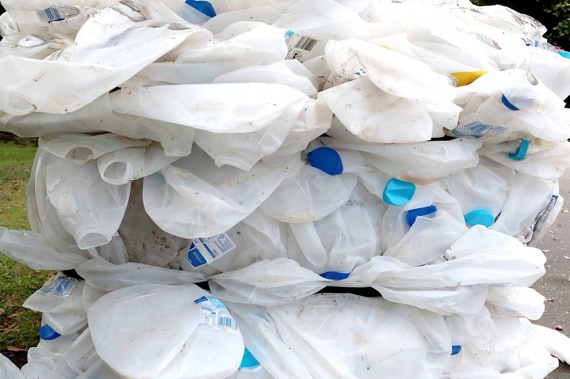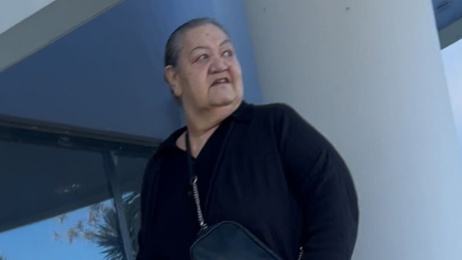
“You wouldn’t want somebody to come in and throw a dead animal on your desk.”
That’s how one environmental activist has described the task of recycling sorters who have to sift through pieces of “revolting” and “filthy rubbish”, including dead animals, that have been dumped into kerbside recycling bins in the Bay of Plenty.
According to Rotorua Lakes Council, items such as dirty nappies, dead animals, clothing and broken homeware have been found after nationwide standardised kerbside recycling rules were put in place on February 1.
The new rules mean no bottle lids or plastics marked with recycling symbols three, four, six and seven can be put into the bins. The Ministry for the Environment said the changes would “divert an extra 36,000 tonnes of recycling from landfill each year”.
Bay of Plenty waste minimisation advocate Kate Fenwick said people needed to realise workers have to sort through recycling.
“It’s not a machine. It’s actually human beings who are having to sort through people’s filthy rubbish.”
/cloudfront-ap-southeast-2.images.arcpublishing.com/nzme/LDSZFO2VNFFX3GCMAFL7ZE7AHQ.jpg) Rotorua Lakes Council has recently endured people dumping non-recyclable rubbish into recycling bins. Photo / Rotorua Lakes Council
Rotorua Lakes Council has recently endured people dumping non-recyclable rubbish into recycling bins. Photo / Rotorua Lakes Council
Fenwick said while working inside the Tauranga recycling plant facility, she had seen “dead animals” come down the sorting line.
“You wouldn’t want somebody to come in and throw a dead animal on your desk and [say], ‘Well, you need to sort that out’.”
When asked about dirty nappies, she said, “When you’ve had nappies sitting in a recycling bin for two weeks ... it’s just revolting. [You] can smell it coming up the line.”
“People hide rubbish at the bottom of the recycling bin and think they’re being clever [by] putting a piece of cardboard over the top.
“But there are cameras in the truck.”
/cloudfront-ap-southeast-2.images.arcpublishing.com/nzme/6SYTG2DXR5D57HTL2P26ERBQRM.jpg) Kate Fenwick (nee Meads) is a Katikati local who educates Kiwis on food and packaging waste. Photo / Alex Cairns
Kate Fenwick (nee Meads) is a Katikati local who educates Kiwis on food and packaging waste. Photo / Alex Cairns
Fenwick said she had also seen ceramic cooktops, car batteries, power banks, cell phones and laptops dumped incorrectly, which “become hazardous”.
“Lithium batteries, especially once the dozer drives over them when [they’re] pushing them up to the sort line, can create a fire quite easily.”
She said with non-recyclable items, there was a “potential [for it to] contaminate the other recycling” and “the whole truck going to landfill because it’s now covered in poo, or an animal carcass or food waste”.
Fenwick believed the changes to standardised recycling were going to be “effective”.
“I think it’s going to be effective because it’s going to simplify it for everybody. Every council is taking the same [approach].”
An issue of ‘empowering and educating people’
Te Puke-based Why Waste founder Leo Murray said standardisation made a lot of sense because many people could not keep up with regional differences. He said it was better for people to place items in their red bins instead of potentially contaminating an entire recycling truck.
He said there was a “strength” to the standardisation rules in that people would have to think about their behaviour when recycling.
“As a nation, our ecological literacy and our ability to deal with these challenges will rise together.
“It’s just an issue of empowering and educating people.”
/cloudfront-ap-southeast-2.images.arcpublishing.com/nzme/DNTGINCRK5HVLOSCMWCU7K66ZY.jpg) Te Puke-based Why Waste founder Leo Murray. Photo / James Stanbridge
Te Puke-based Why Waste founder Leo Murray. Photo / James Stanbridge
Rotorua Lakes Council waste and climate change manager Craig Goodwin said it was “unlikely” new standards would incur “any extra expenses” for the council or taxpayer.
Goodwin said materials placed in recycle bins for collection last week “included soft plastics, electrical items, clothing, building materials and much more”.
“It’s always disappointing to see recycling collections contaminated with waste, which often results in valuable recyclables having to be [sent] to landfill.”
/cloudfront-ap-southeast-2.images.arcpublishing.com/nzme/6FJGK6VZWFDX5MLKT7WTSEO4EE.jpg) A further example of the sort of non-recyclable rubbish Rotorua Lakes Council has seen dumped in recycling bins recently. Photo / Rotorua Lakes Council
A further example of the sort of non-recyclable rubbish Rotorua Lakes Council has seen dumped in recycling bins recently. Photo / Rotorua Lakes Council
Tauranga City Council sustainability and waste manager Dan Smith said its kerbside service was already well-established.
“Having the same items collected throughout New Zealand will make it easier for all of us to recycle right and reduce unnecessary waste going to landfill,” Smith said.
“It is now easier for people to put items in the right bin. The changes aim to reduce confusion of what can and cannot be collected at kerbside, and ultimately reduce waste.”
Items which can be recycled
- Plastic bottles and containers marked with recycling symbols one, two or five
- Glass bottles and jars
- Paper and cardboard
- Food tins
- Drink cans
Items which can’t be recycled:
- Lids for bottles, jars and containers (metal and plastic)
- Plastics marked with recycling symbols three, four, six or seven.
- Aerosols
- Coffee cups and lids
- Soft plastics
- Compostable packaging and containers
- Food and drink cartons (liquid paperboard)
Source: Ministry for the Environment.
Michaela Pointon is an NZME reporter based in the Bay of Plenty and was formerly a feature writer.
Take your Radio, Podcasts and Music with you









